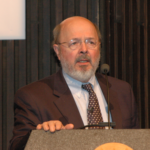CHURCHVILLE, VA – For decades, the Intergovernmental Panel on Climate Change has been fixated on carbon dioxide (CO2), asserting the sun’s variations in output are too small to have triggered the surge in Earth’s temperatures between 1976 and 1998. The Total Solar Irradiation index varies by only about 10 percent—too little to have produced such a rapid temperature change, they say.
Now, however, Solar Surface Radiation measurements by the Swedes show the real measure of the sun’s climate impact on Earth is not the amount of solar energy reaching the outer atmosphere. Instead, it is the amount of solar radiation reaching Earth’s surface. Between Earth and the outer edge of the atmosphere is a swirl of clouds and aerosols that determine how much solar radiation eventually reaches Earth itself. Low, wet clouds, in particular, can deflect solar energy back into space, so cloud variations can either warm us or cool us. The IPCC has long admitted it cannot model clouds.
The Swedish government has operated a network of solar radiation stations for the past 30 years. They report there was an upward trend in global radiation at all of their stations from 1983 to the turn of the twenty-first century. Since 2002–2005, in contrast, the solar radiation at Earth’s surface has been dimming—just as Earth’s temperatures began the “pause” the IPCC can’t explain.
The International Satellite Cloud Climatology Program also found a decrease in global cloud cover between 1987 and 2000—from 69 percent to 64 percent. Thus, the amount of solar energy reaching Earth’s surface began contracting just before the global temperatures began their “unexplained” pause.
Experts agree a 1 or 2 percent change in cloud cover could have created either the Modern Warming or a “little ice age.” We have long known that when the sun is very active, it throws out a gigantic solar wind. This shields Earth from many of the high-energy cosmic rays that flit through the universe. When the sun is weak, however, its solar wind retreats, letting more of the cosmic rays hit Earth.
We know further that when the cosmic rays zing into our atmosphere, they produce more “cloud seeds”—tiny particles of water and sulfur that attract moisture from the surrounding air. When enough cloud seeds gather, they produce more of the low, wet clouds that deflect solar heat back into space.
Henrik Svensmark of the Danish Space Research Center has long maintained the “cloud seeds” are responsible for the vast majority of the recent warming. More than that, he believes the same solar-cloud thermostat caused the 600 similar global warmings documented in an Atlantic Ocean sediment core going back one million years.
The increase in atmospheric CO2 since 1940 could certainly have trapped more heat in our atmosphere—but both alarmists and skeptics agree the total warming from a doubling of CO2 would be only 1.1 degree C. The alarmists say the impact of the CO2 is being magnified by increased water vapor in the atmosphere, but we don’t have the massive warming they predicted. Instead, we have the long pause in warming they can’t explain.
How long will we have to wait for the climate modelers to admit their models have failed? How many thousands of pensioners in Europe will die from cold winters without means to purchase heat? Britain is facing total electric blackouts, according to the OECD. How many poor women and children in the Third World will have to suffer and die from lung diseases produced by their own open cook-fires instead of using coal-fired electricity? The U.S. government has announced it will not help South Africa finance major new coal-fired power plants, leaving its poor to die for an undocumented theory. Isn’t President Barack Obama’s “war on coal” in America equally ill-advised?
Dennis T. Avery ([email protected]), a senior fellow for The Heartland Institute, is an environmental economist and formerly a senior analyst for the Department of State. He is coauthor, with S. Fred Singer, of Unstoppable Global Warming Every 1500 Years.





